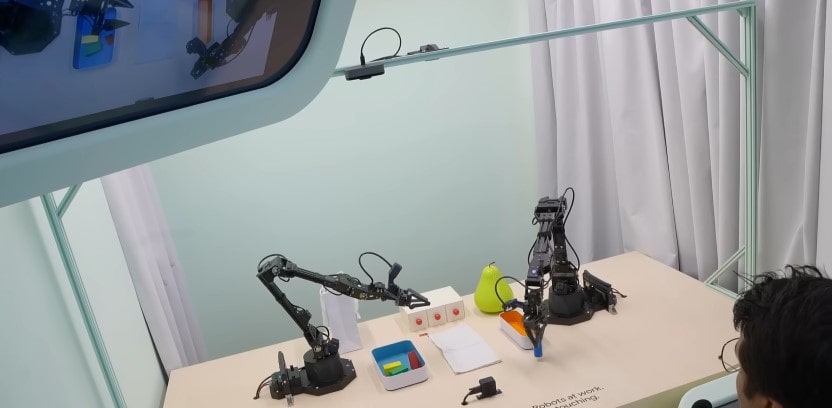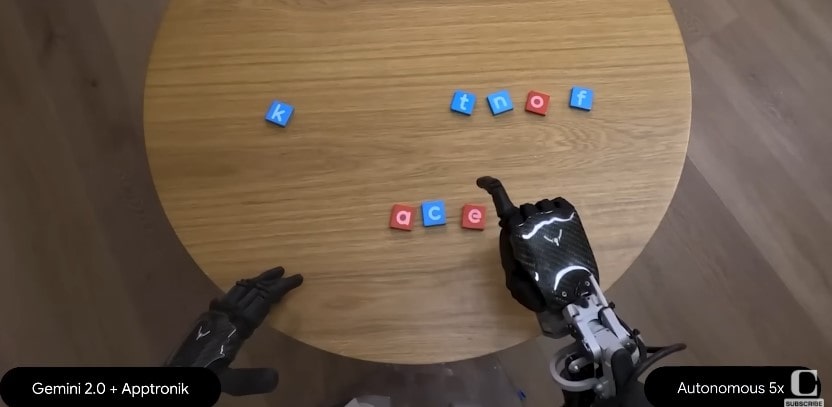At Google’s recent I/O developer conference, the tech giant showcased its Gemini AI integrated into the Aloha 2 robots, demonstrating how AI is teaching robots to operate autonomously in the real world.
Key Takeaways
✔ Aloha 2 is a low-cost, open-source hardware system for bimanual teleoperation (costing ~$30,000).
✔ Robots executed tasks like object sorting, lunch-packing, and even slam-dunking a mini basketball—without prior training.
✔ Voice commands enabled imprecise instructions (e.g., “put the erasers away”), with robots adapting to incomplete prompts.
✔ Part of a broader push toward generalized AI for robotics, combining multimodal inputs (text, audio, video).
The Aloha 2 Demo: AI Meets Real-World Tasks

What is Aloha 2?
Dubbed a “low-cost, open-source hardware system” by developers, Aloha 2 features dual robotic arms designed for machine learning experiments. While “low-cost” by Google’s standards (~$30,000), the system highlights advancements in accessible robotics.
Tasks Demonstrated
Attendees at Google I/O watched the robots:
- Pack a lunch: Place bananas in a container, zip a plastic bag, and fold paper into an origami fox.
- Respond to voice commands:
- “Can you put the highlighter away?” (without specifying location).
- “Put the erasers away” (while a human held one eraser, prompting the robot to pause).
- Perform untrained actions: Slam-dunk a mini basketball into a hoop.
“The robots hesitated a moment before picking up the erasers that weren’t in use.”
— Observed during the demo
How It Works
- Multimodal AI: Processes voice, video, and sensor data to interpret tasks.
- Adaptive Learning: Figures out imprecise instructions (e.g., inferring where to store items).
- Generalized Problem-Solving: Unlike task-specific robots, Aloha 2 tackles varied challenges.
The Bigger Picture: Google’s Robotics Vision

Google’s work extends beyond robotic arms. Collaborations with companies like Apptronik (creators of the Apollo humanoid robot) hint at a future where AI-powered robots assist in diverse settings—from homes to workplaces.
Why This Matters
- Human-Robot Collaboration: Robots complement human actions (e.g., ignoring held erasers).
- Cost vs. Innovation: While $30,000 isn’t consumer-friendly, it accelerates research.
- AI’s Role: As Jesse Earl, the demo host, asked: “Are you bought into AI yet, or would you rather leave that to the robots?”
Final Thoughts
The Aloha 2 demo underscores Google’s progress in merging AI flexibility with robotic precision. While challenges remain (like cost and scalability), the ability to handle ambiguous commands signals a leap toward truly intelligent machines.
What do you think? Share your thoughts in the comments!
